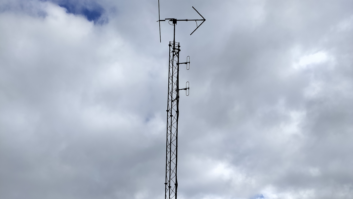SYDNEY, Australia� In April, radioinfo.com.aupublished an article by Australian expat and media researcher,�John Patkin, now based in Hong Kong, who argued that AM/FM and DAB+ would become obsolete as internet or online delivery became ubiquitous. His opinions have proven controversial, and have been addressed by James Cridland, Australian Broadcasting Corporation�s Director of Radio�Michael Mason, and by Joan Warner, the CEO of Commercial Radio Australia.�
We covered their responses in aprevious articlein Digital Radio Update. Others have since responded as well.�
�
Patkin has since written a rebuttal to those that disagree with him, the entirety of which can be seenhere.� I found one particular paragraph (the final) to be of interest though. Read it here, emphasis mine:
�
�What is evident in this public debate is that some believe radio is strongly aligned to a call sign, a number on a limited spectrum of delivery and a set space. This is threatened by the possibility that much larger multimedia organizations, which identify the value of accessible audio content, will eclipse the existing model by creating their own stations with branding that goes beyond a limited platform. Comparisons between the LG Stylus DAB+ and streaming have shown internet-delivery costs are negligible (and sometimes free), while digital reception is limited.What would be great would be to explore whether online radio listening would really break the Internet.�That would be better than simply likening radio to a cockroach…�
�
I�d like to point out that has been explored, and Digital Radio Updatecovered thatas well. Swedish company Teracom engaged the services of Swedish firm A-Focus to look at whether or not the cellular system in Sweden could supplant the entire set of FM radio stations there.� While that is not a test of �breaking the internet� what really matters is not the internet, per se, but themobile network capacity.
So what conclusions were drawn from this study?
�Some people believe it is possible to replace broadcast radio with radio via cellular networks. Surely, they have not done the math. I have done the math and the conclusion is clear � it is not a realistic alternative,� says G�ran Hedstr�m, senior consultant at A-Focus and primary author of the report. The report, entitled �Can the cellular networks cope with linear radio broadcasting?� lists several arguments for why it is not a credible alternative, two of which are:
�������Capacity:An enormous capacity would be required to stream today�s radio services in a mobile broadband network. When converted, today�s radio listening represents a larger amount of data than all the incoming and outgoing data in all four mobile operators� networks, in 2012.
�������Costs:Given current price levels, it would cost around �860 million per year to broadcast radio via the mobile operator�s cellular networks, which can be compared to the cost of around �10-20 million EUR per year for equivalent capacity in the terrestrial network. This extra cost must thus be paid by the broadcasters or directly by the consumers. Today, neither broadcasters nor consumers are close to being able to take on this expense. Even if the price for capacity in the mobile broadband networks should fall, the price reduction would need to be around 96 percent.
Granted, this report is from the end of 2013; it�s specific to Sweden; and it was done by one company engaged by yet another company that doesn�t want to see its own oxe gored; still � math is math. The situation is likely similar in other countries around the world. Can you dismiss the results?












